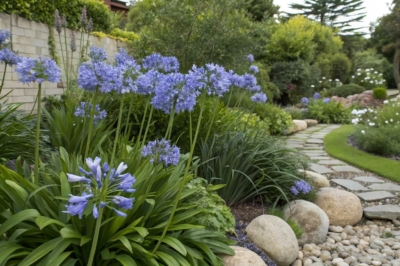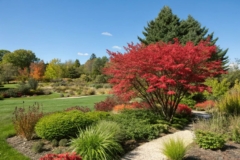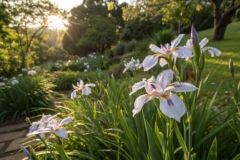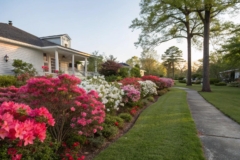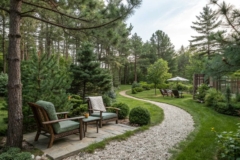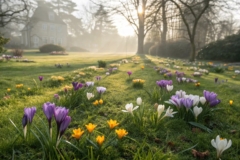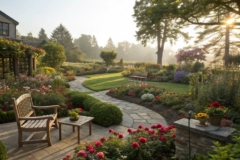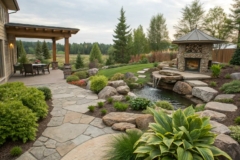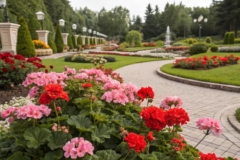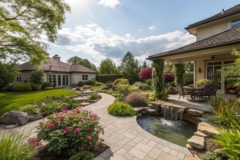1. Agapanthus as a Focal Point
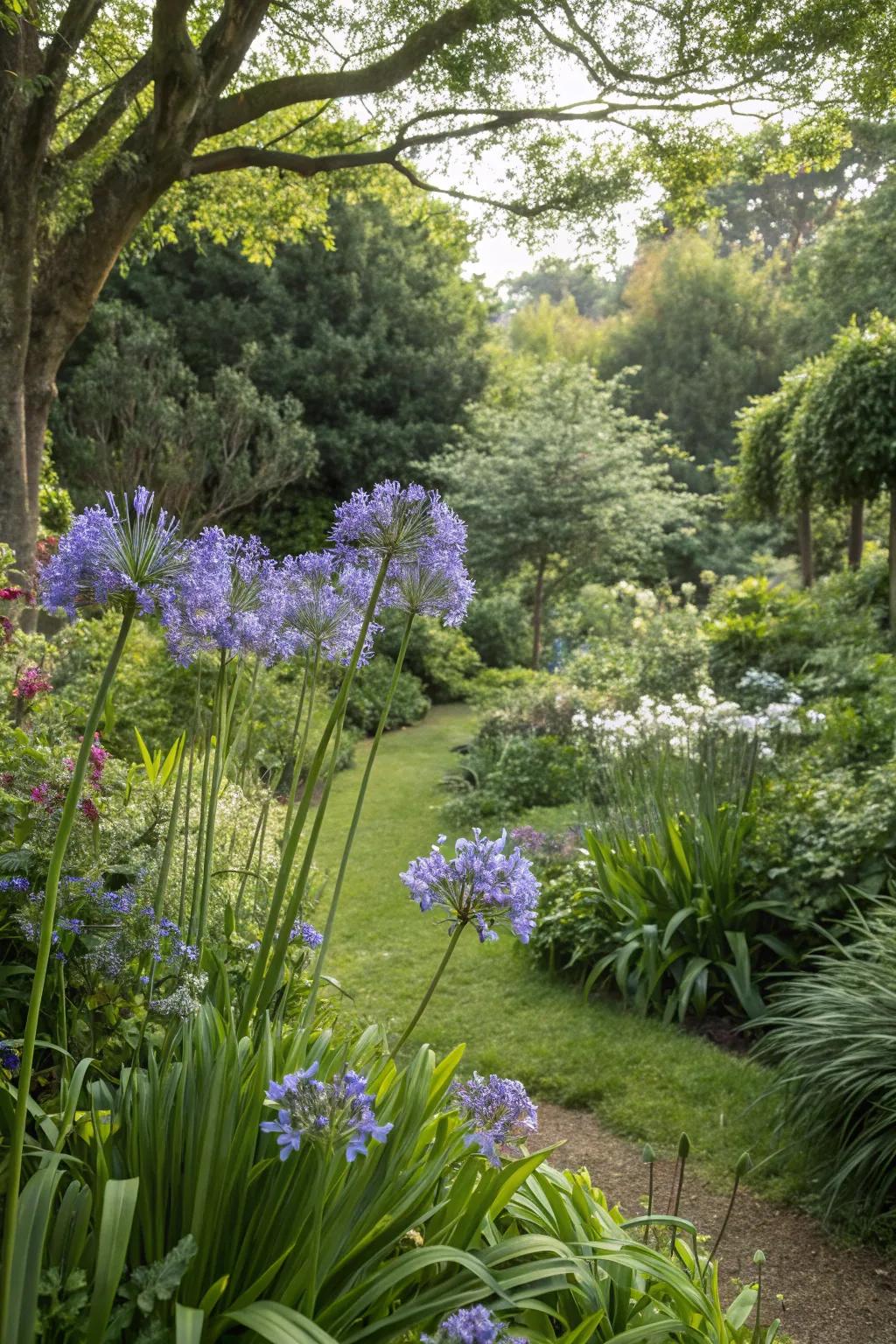
Use agapanthus as a focal point in your garden to draw attention and admiration. I love how they stand tall and proud, commanding the center stage in my landscape.
A few choices to try:
- Decorative Garden Planters: Enhance your agapanthus with elegant planters, adding style and height to your garden focal point.
- Garden Soil Nutrient Mix: Boost your agapanthus growth with enriched soil mix for vibrant, healthy blooms all season.
- Outdoor Solar Garden Lights: Illuminate your agapanthus at night with solar lights, creating an enchanting garden atmosphere.
2. Pathway Edging for Inviting Walkways
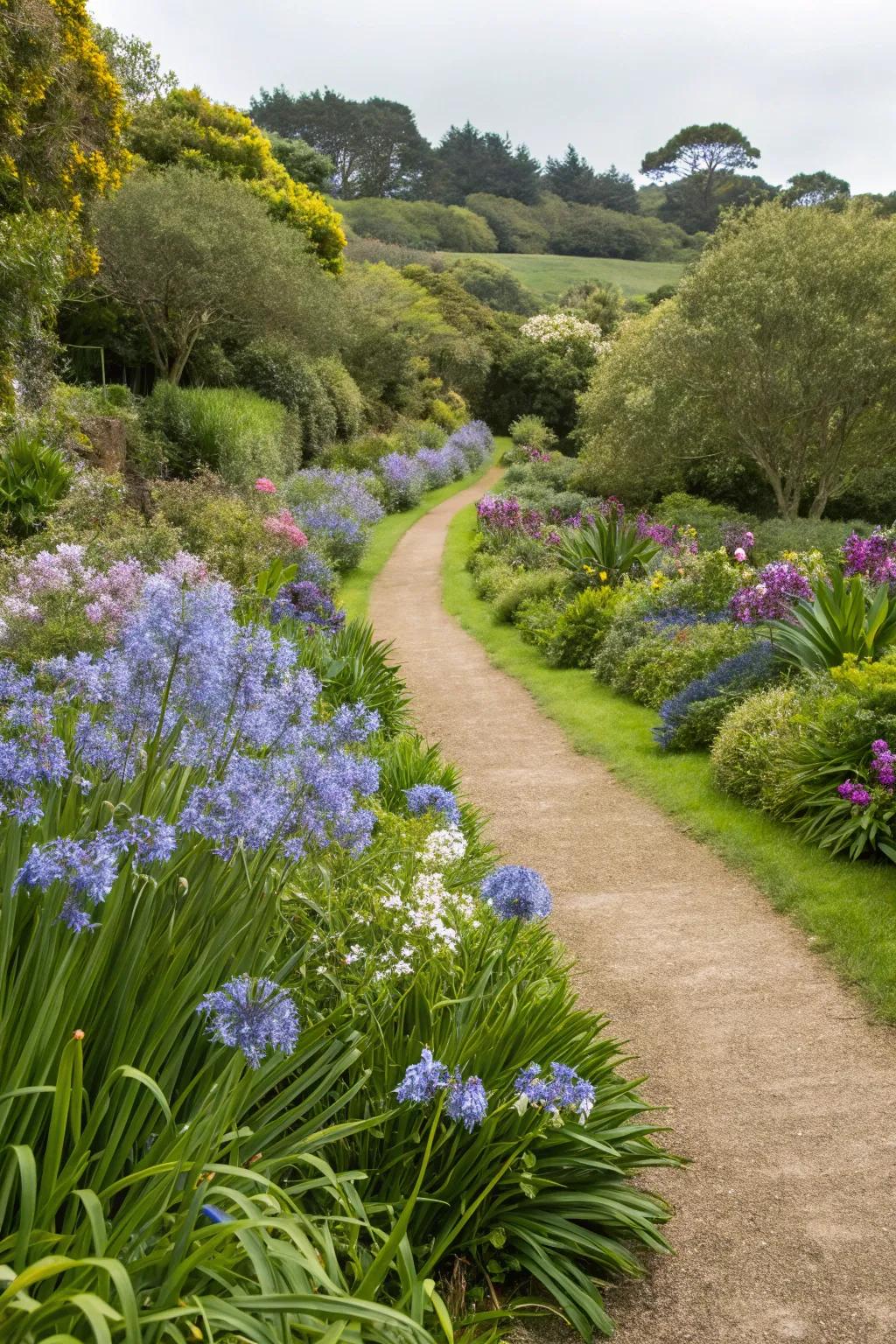
Line your garden paths with agapanthus to guide visitors and add elegance. In my own garden, these plants draw the eye along the path, making each walk feel like a serene journey.
You might like:
- Agapanthus Plant Bulbs: Transform your garden paths with lush agapanthus blooms for a naturally inviting walkway experience.
- Garden Pathway Lights: Illuminate your walkway with elegant lighting to enhance the beauty of your agapanthus-lined paths.
- Eco-Friendly Mulch: Keep your garden neat and enhance soil health with eco-friendly mulch along your agapanthus borders.
3. Cottage Garden Charm with Agapanthus
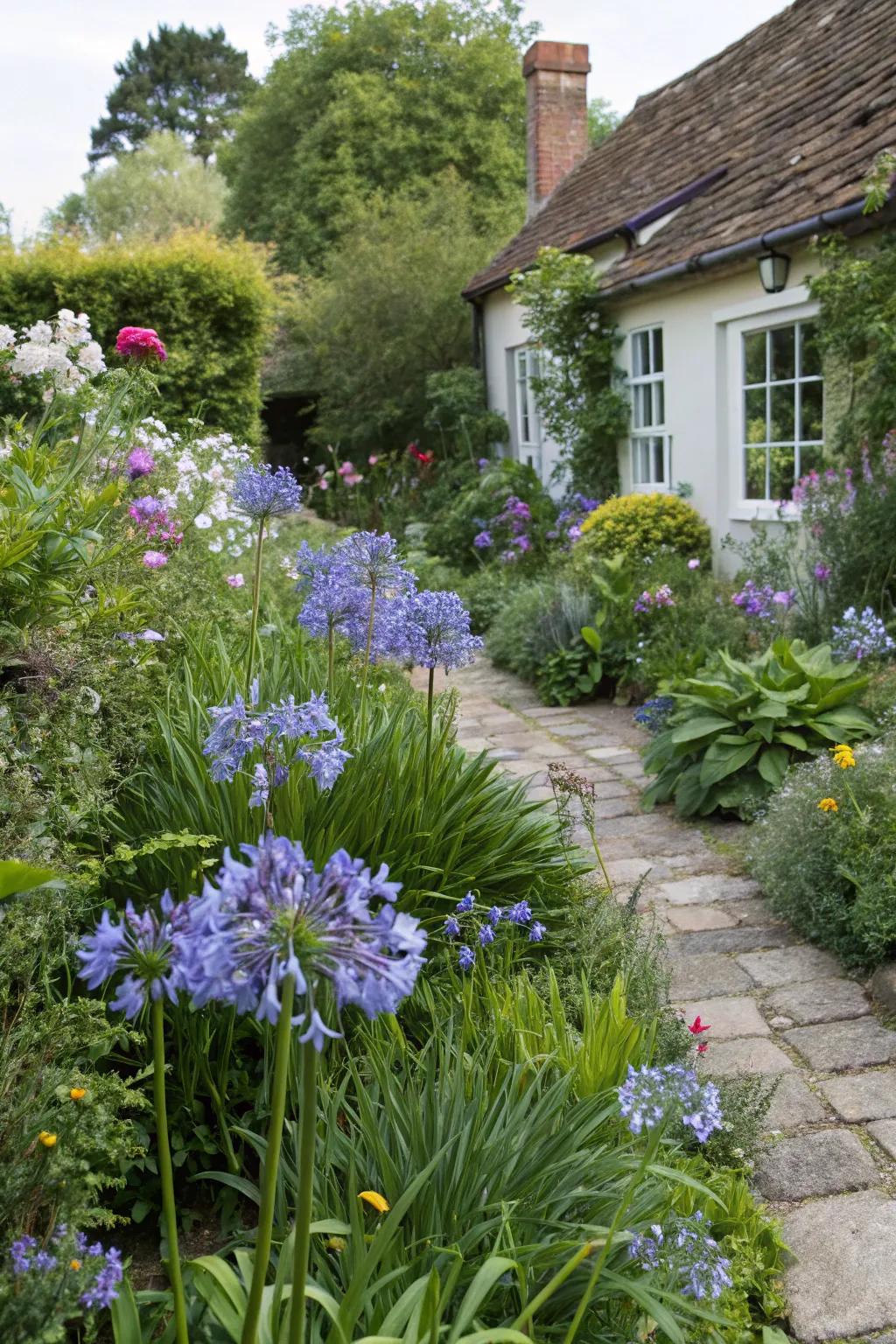
Integrate agapanthus into a cottage garden for a touch of whimsy and charm. In my backyard, these flowers add a delightful elegance to the casual abundance typical of cottage styles.
Items that may come in handy:
- Cottage Garden Pathway Stones: Enhance your garden’s rustic charm with these decorative pathway stones. Easy to install and weather-resistant.
- Agapanthus Seeds or Bulbs: Plant agapanthus for a touch of elegance and whimsy in your cottage garden. Perfect for beginners.
- Garden Border Edging: Keep your garden neatly organized with flexible border edging. Durable and easy to install.
4. Color Themes to Harmonize Your Space
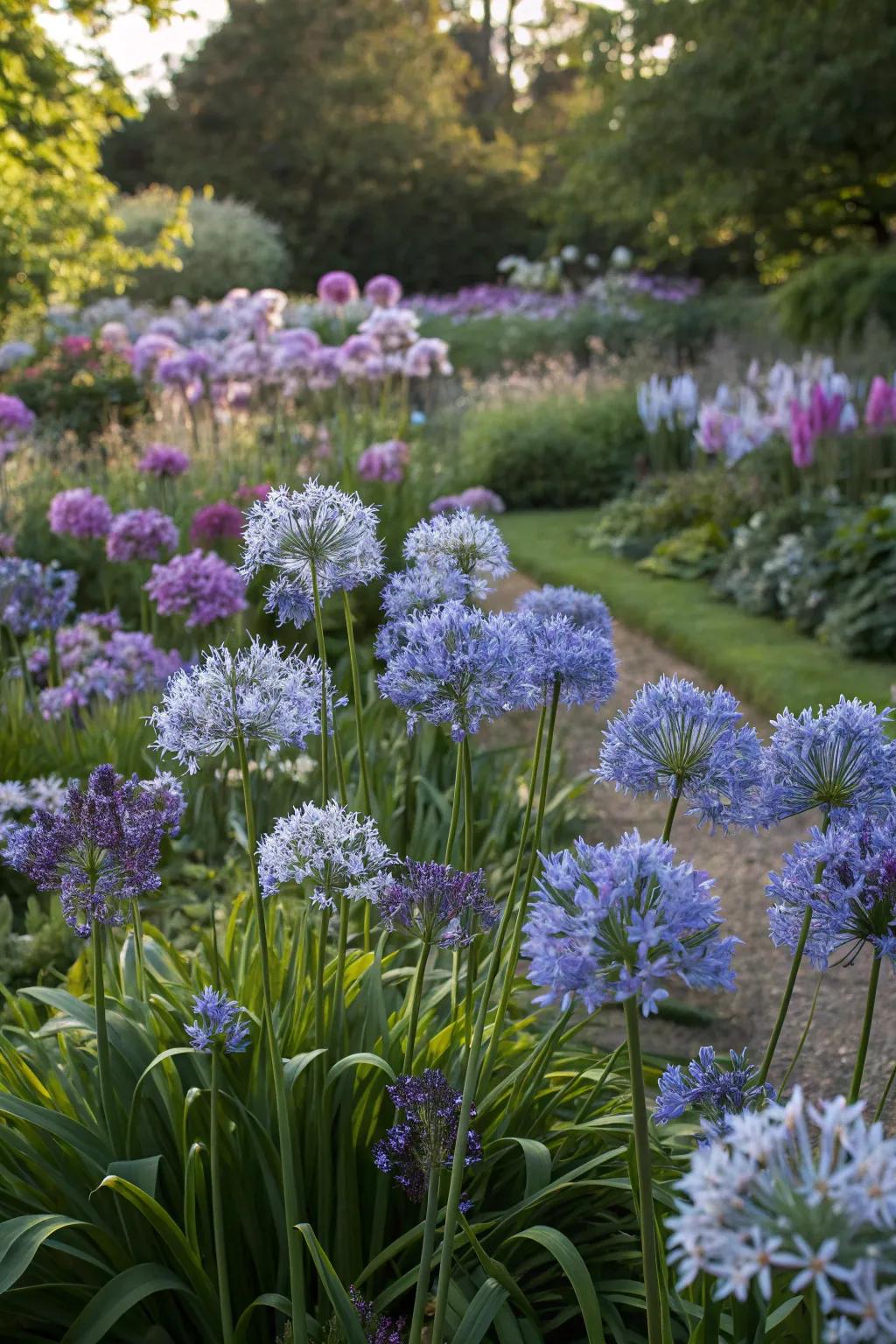
Use different shades of agapanthus to match or contrast with your garden’s color scheme. I adore how the blues and whites play off each other in my garden, creating a harmonious visual palette.
May just do the trick:
- Blue Agapanthus Bulbs: Plant these blue agapanthus bulbs to add striking contrast and elegance to your garden space.
- White Agapanthus Seeds: Grow white agapanthus for a serene and balanced color theme in your landscape design.
- Garden Soil for Flowering Plants: Ensure healthy agapanthus growth with this nutrient-rich garden soil, perfect for vibrant blooms.
5. Zen Gardens with Agapanthus
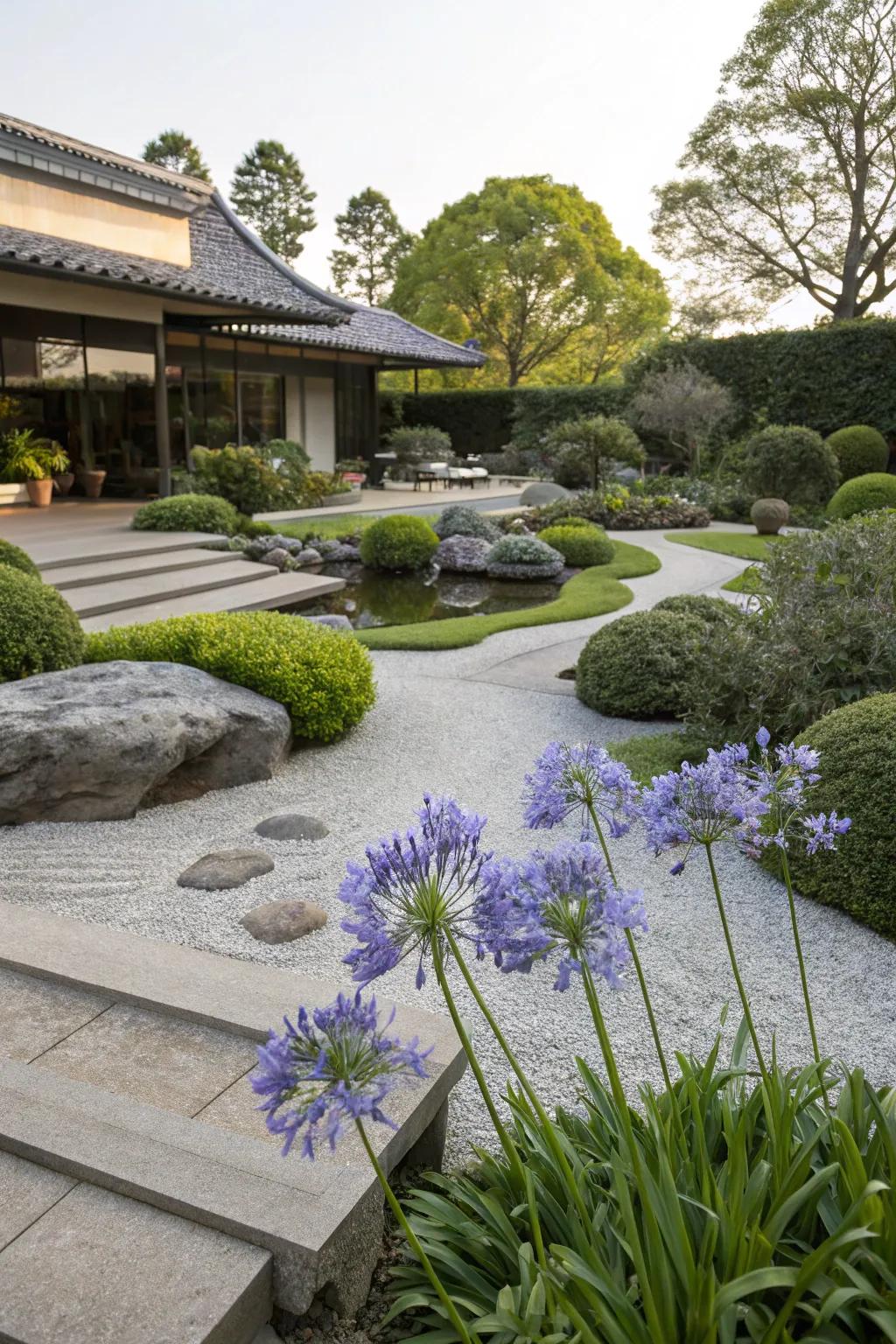
Incorporate agapanthus into Zen gardens for tranquility and balance. Their serene presence in my garden enhances the peaceful atmosphere I cherish.
A few things you might like:
- Zen Garden Rake Set: Enhance your Zen space with elegant garden rakes for precise sand designs and tranquility.
- Agapanthus Plant Seeds: Grow beautiful agapanthus blooms to enrich your garden’s peaceful ambiance with ease.
- Solar Garden Lanterns: Illuminate your Zen garden with sustainable solar lanterns to enhance nighttime tranquility.
6. Natural Settings for Effortless Beauty
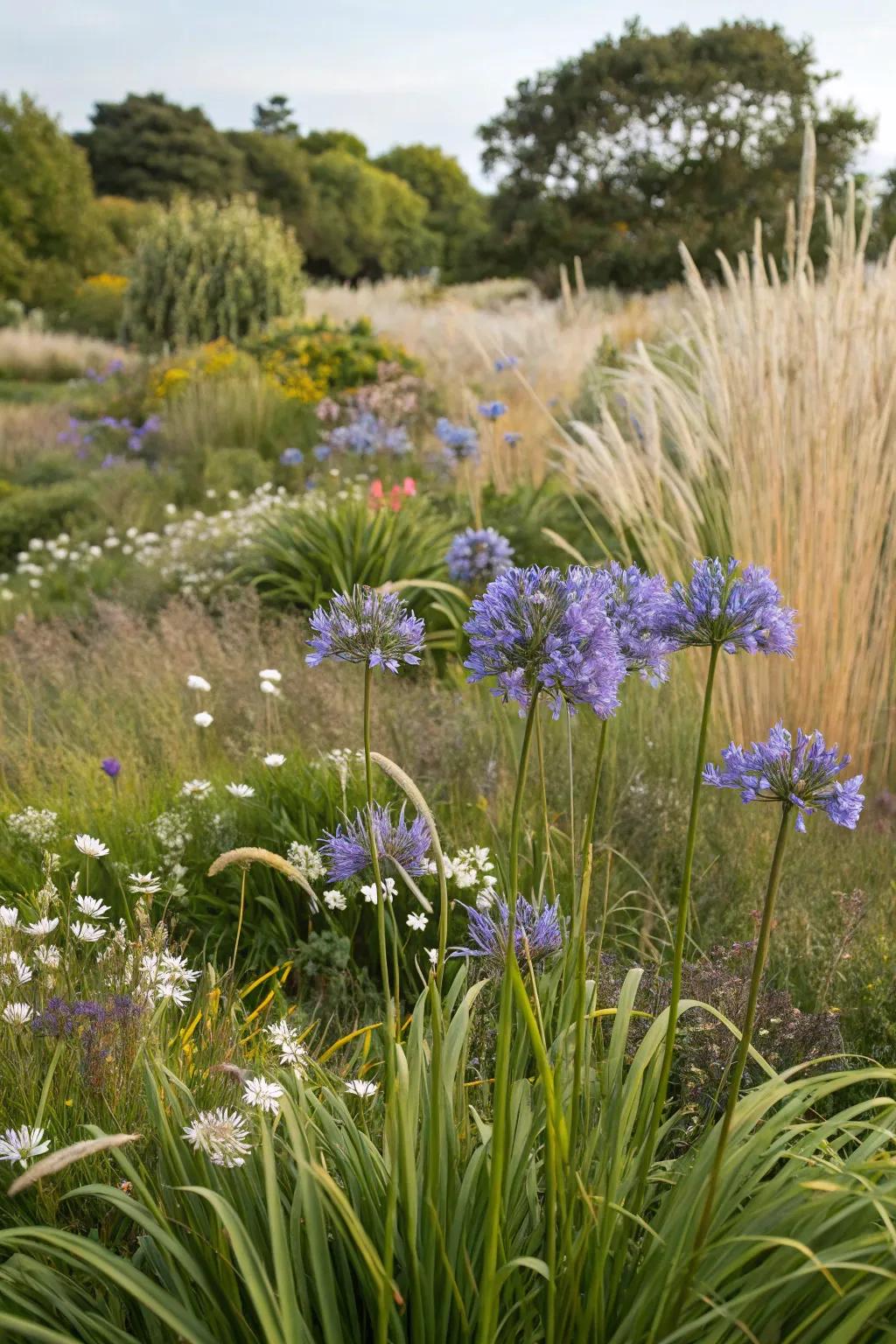
Allow agapanthus to grow more freely in naturalistic settings for an effortless, wild beauty. In my garden, they mingle with native grasses and wildflowers, creating a relaxed and inviting atmosphere.
Try these:
- Organic Wildflower Seed Mix: Enhance your garden’s charm with a diverse mix of colorful, natural wildflowers.
- Decorative Garden Stakes: Add character and support to growing plants with elegant decorative garden stakes.
- Native Grass Seed Pack: Transform your garden with low-maintenance native grasses for a naturalistic look.
7. Water Features Enhanced by Agapanthus
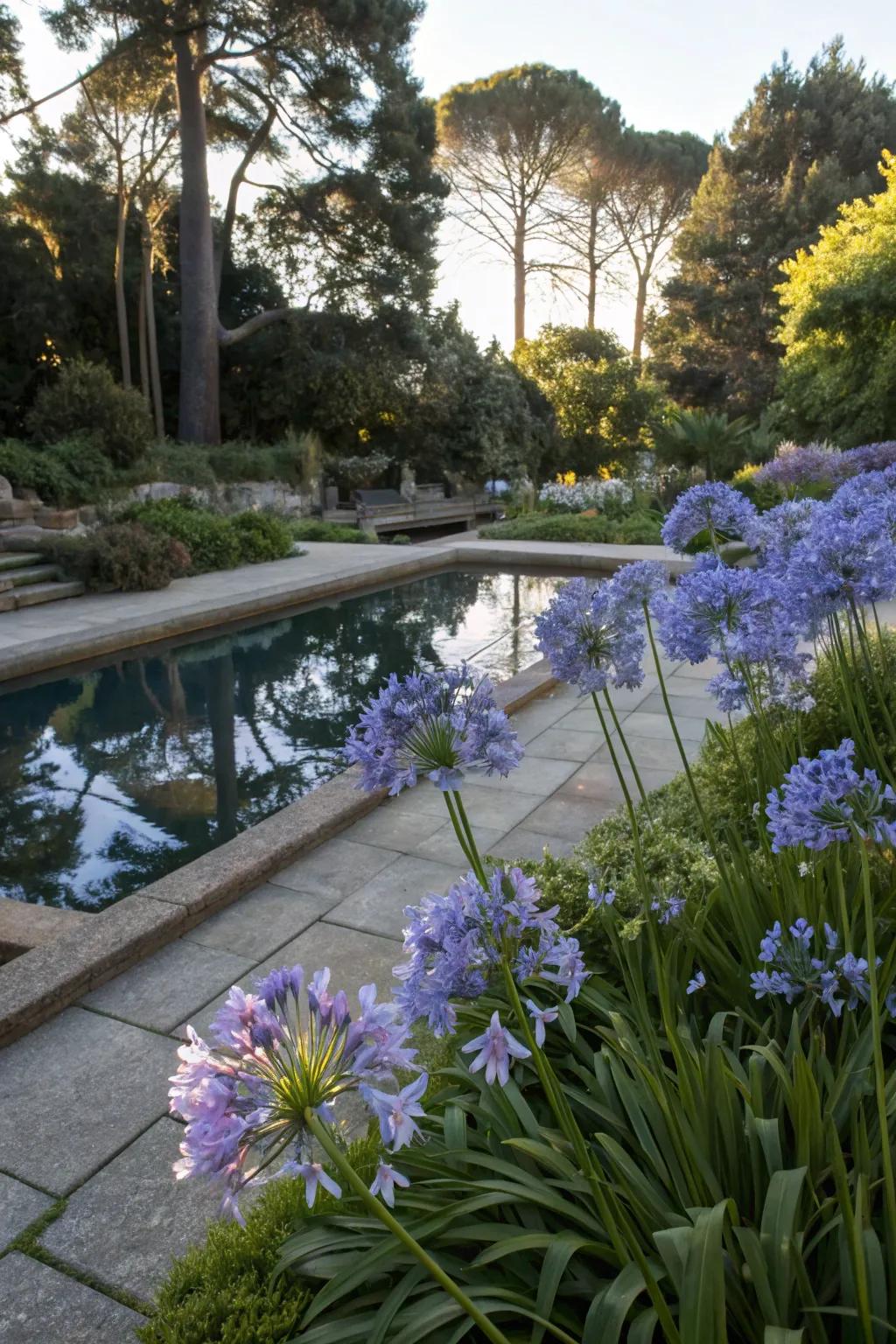
Position agapanthus near water features to boost their reflective beauty. In my garden, the shimmering water and vibrant blooms create a serene oasis.
Consider these options:
- Outdoor Fountain Pump: Enhance your garden oasis with a fountain pump, adding sound and movement to your landscape.
- Solar Pond Lights: Illuminate water features with eco-friendly solar lights, creating a magical evening ambiance.
- Garden Waterfall Kit: Transform your space with a waterfall kit, adding soothing sounds and visual interest.
8. Agapanthus with Bold Architectural Plants

Pair agapanthus with bold architectural plants to create a striking landscape design. In my garden, their forms complement each other beautifully, adding structure and interest.
Some ideas to consider:
- Decorative Garden Planters: Enhance your garden’s structure with stylish planters that complement your agapanthus and architecture.
- Premium Compost for Flowering Plants: Ensure your agapanthus thrives with nutrient-rich compost, perfect for vibrant blooms and growth.
- Sturdy Garden Trellis: Add vertical interest and support your bold plants with a durable, stylish garden trellis.
9. Contrasting Textures for Visual Interest
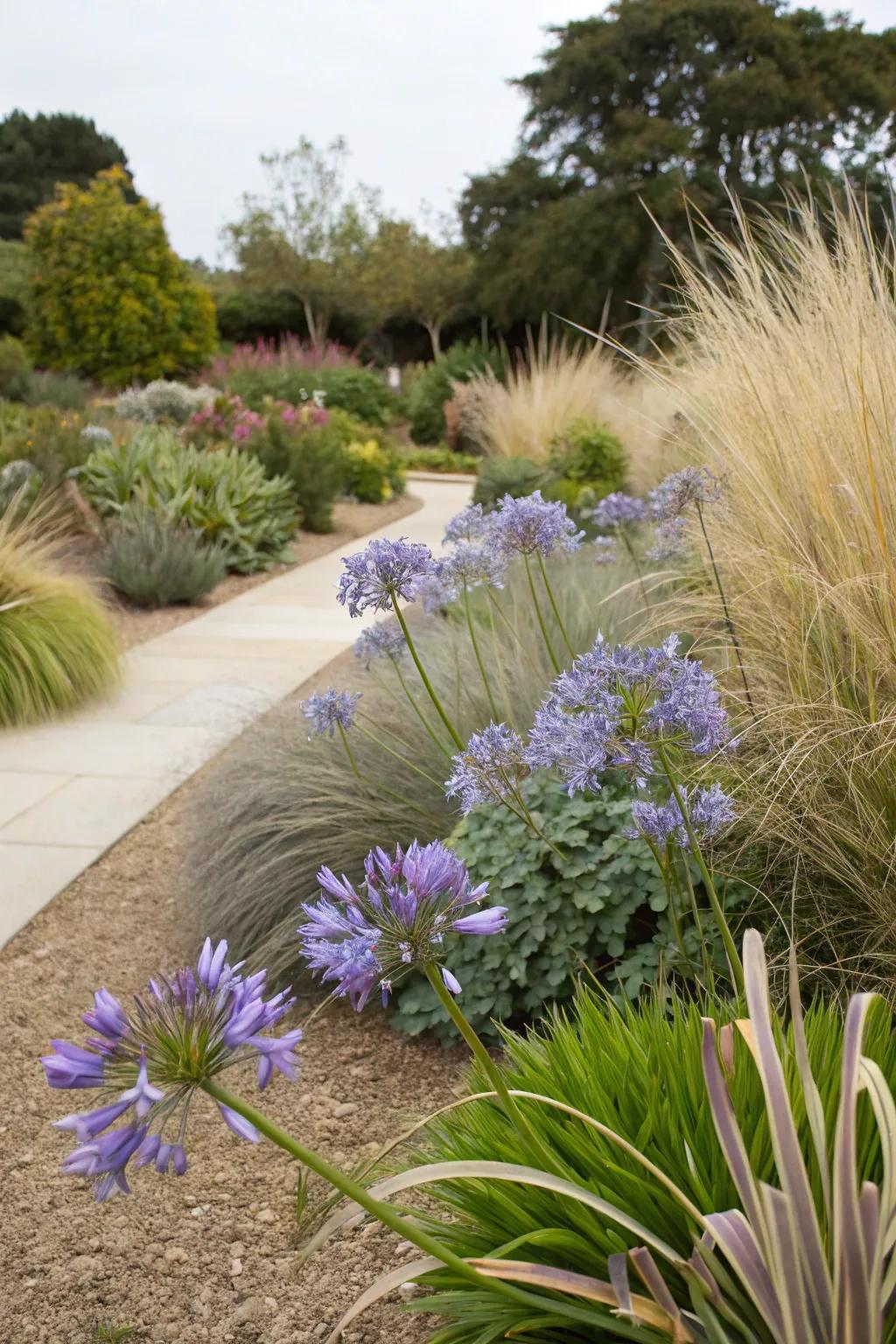
Combine agapanthus with grasses or succulents for a delightful contrast in textures. This pairing in my garden always draws compliments for its unique and visually intriguing appeal.
These products might help:
- Decorative Garden Grasses Mix Pack: Enhance your garden with a blend of ornamental grasses, adding texture and elegance effortlessly.
- Agapanthus Flower Bulbs: Brighten your garden with agapanthus blooms, ideal for adding height and color variety.
- Drought-Tolerant Succulents Collection: Discover low-maintenance succulents that seamlessly integrate into any landscape for a modern appeal.
10. Agapanthus in Rock Gardens
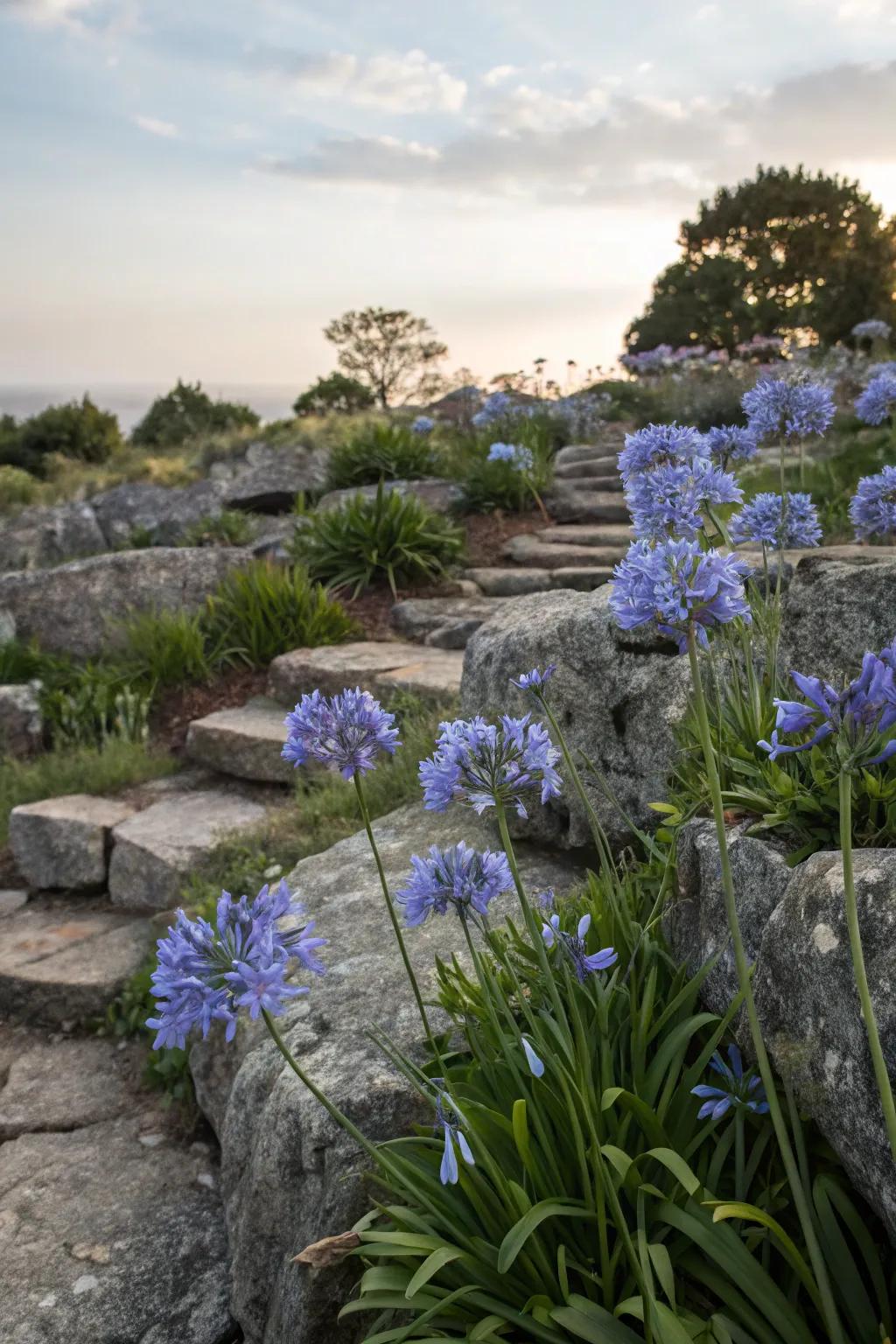
Plant agapanthus in rock gardens for a touch of elegance amid rugged stones. This setup in my garden adds a remarkable contrast and elevates the natural beauty of the rocks.
A few helpful options:
- Rock Garden Plant LED Grow Light: Illuminate your rock garden with adjustable LED grow lights for healthier agapanthus growth.
- Natural Stone Mulch Bag: Enhance the aesthetics with decorative stone mulch that complements your agapanthus beautifully.
- Drip Irrigation Kit for Rock Gardens: Ensure consistent watering with an easy-to-install drip irrigation kit for your agapanthus.
11. Single-Hue Borders for Dramatic Impact
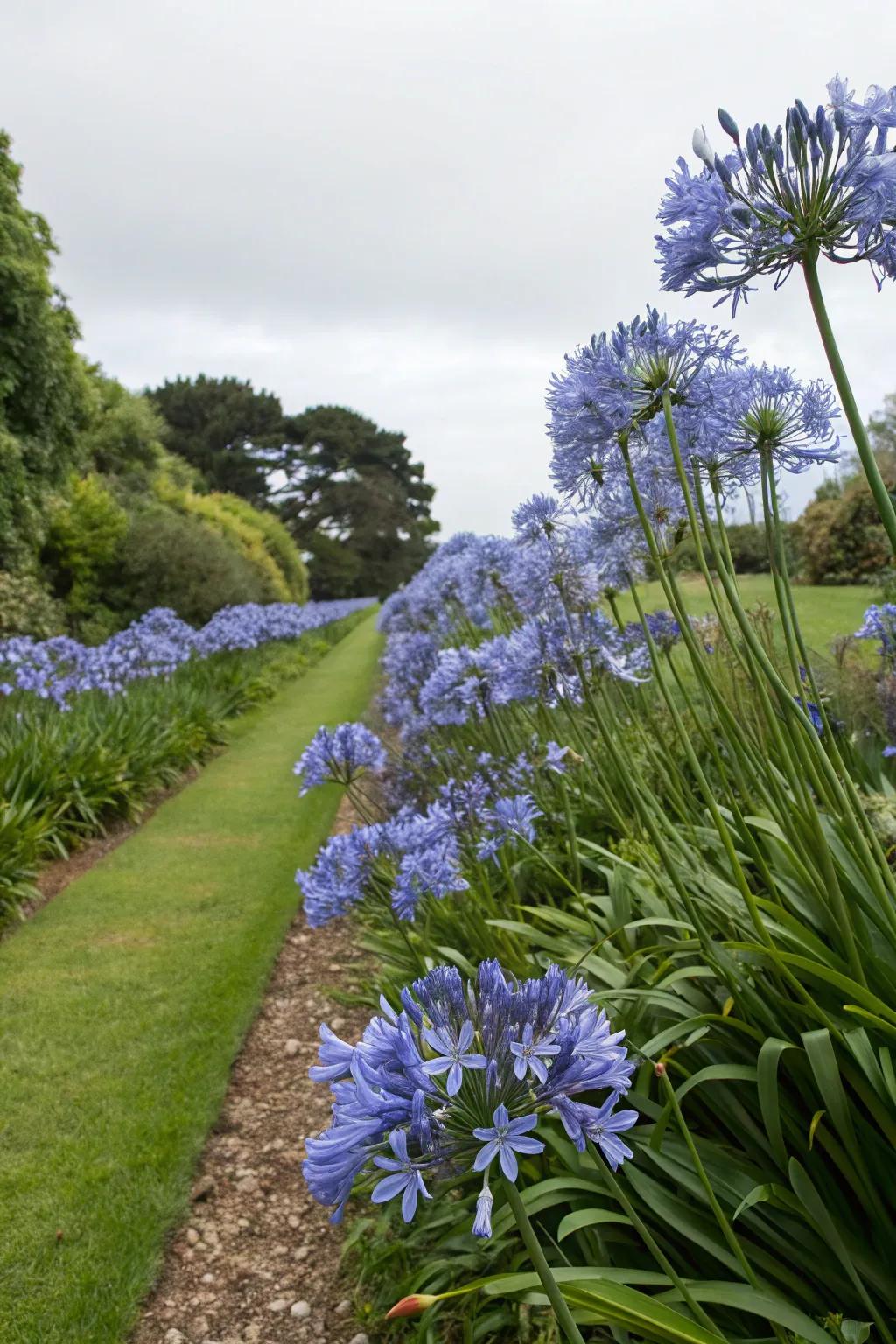
Create a striking border using a single hue of agapanthus for dramatic effect. This approach in my garden highlights the plant’s form and makes a bold visual statement.
You might give these a try:
- Agapanthus Bulbs: Enhance your garden with these vibrant agapanthus bulbs for a stunning, cohesive border effect.
- Garden Edging Kit: Define your borders with this easy-to-install garden edging for a neat, professional look.
- Drip Irrigation System: Simplify watering with this efficient drip irrigation system, ensuring consistent moisture for your plants.
12. Mixed Borders for a Burst of Color
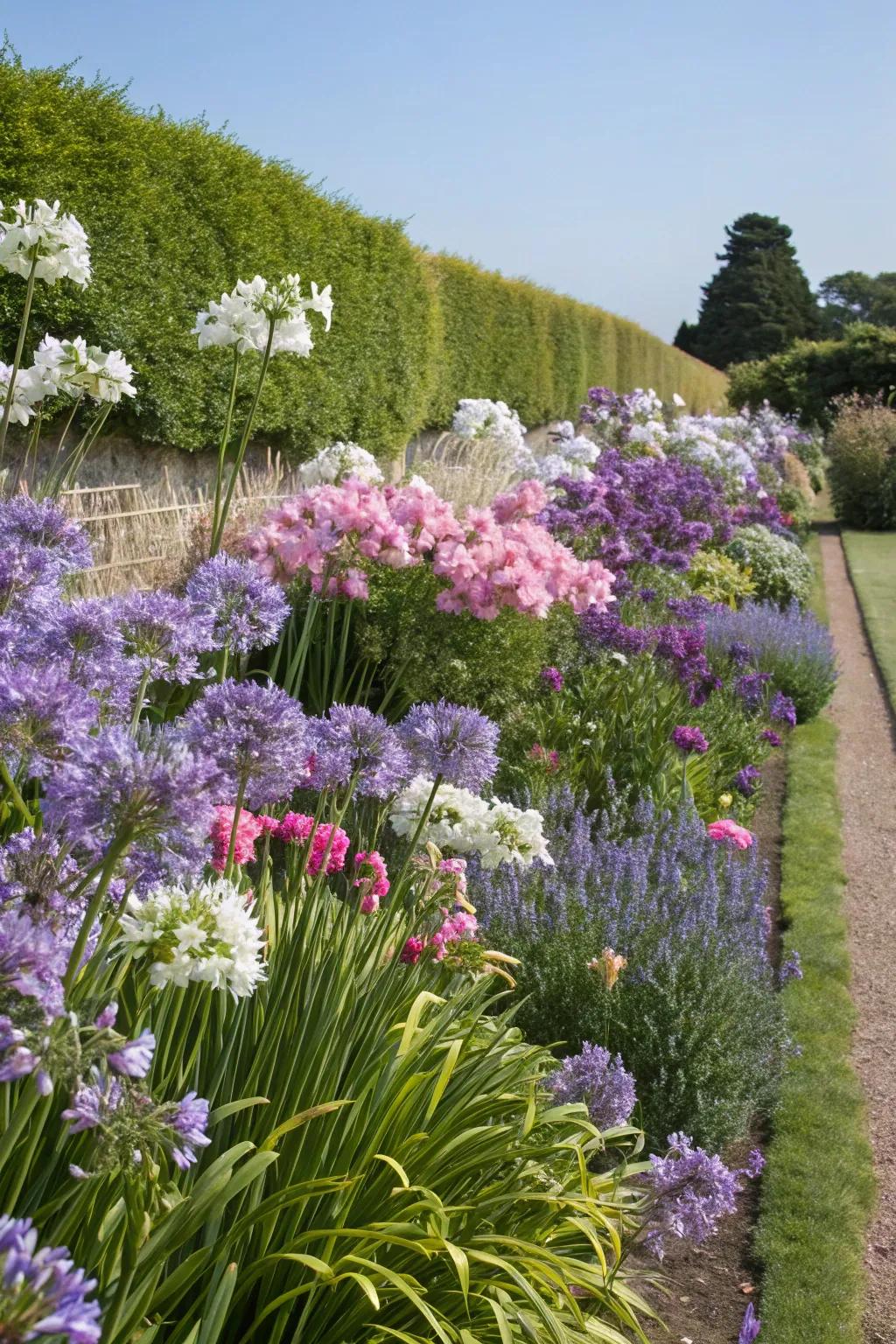
Pairing agapanthus with other colorful perennials creates a dynamic mixed border that bursts with color. I love watching the interplay of shapes and hues in my garden, where agapanthus stands out beautifully against a backdrop of diverse blooms.
Products that could assist:
- Mixed Perennial Flower Seed Pack: Create vibrant borders effortlessly with a curated seed mix of colorful perennials. Start planting today!
- Adjustable Garden Hose with Nozzle: Keep your mixed borders hydrated with ease using this flexible hose and adjustable spray nozzle.
- Organic All-Purpose Plant Fertilizer: Boost your garden’s growth naturally with this organic fertilizer. Perfect for sustaining vibrant blooms.
13. Contemporary Settings with a Modern Twist
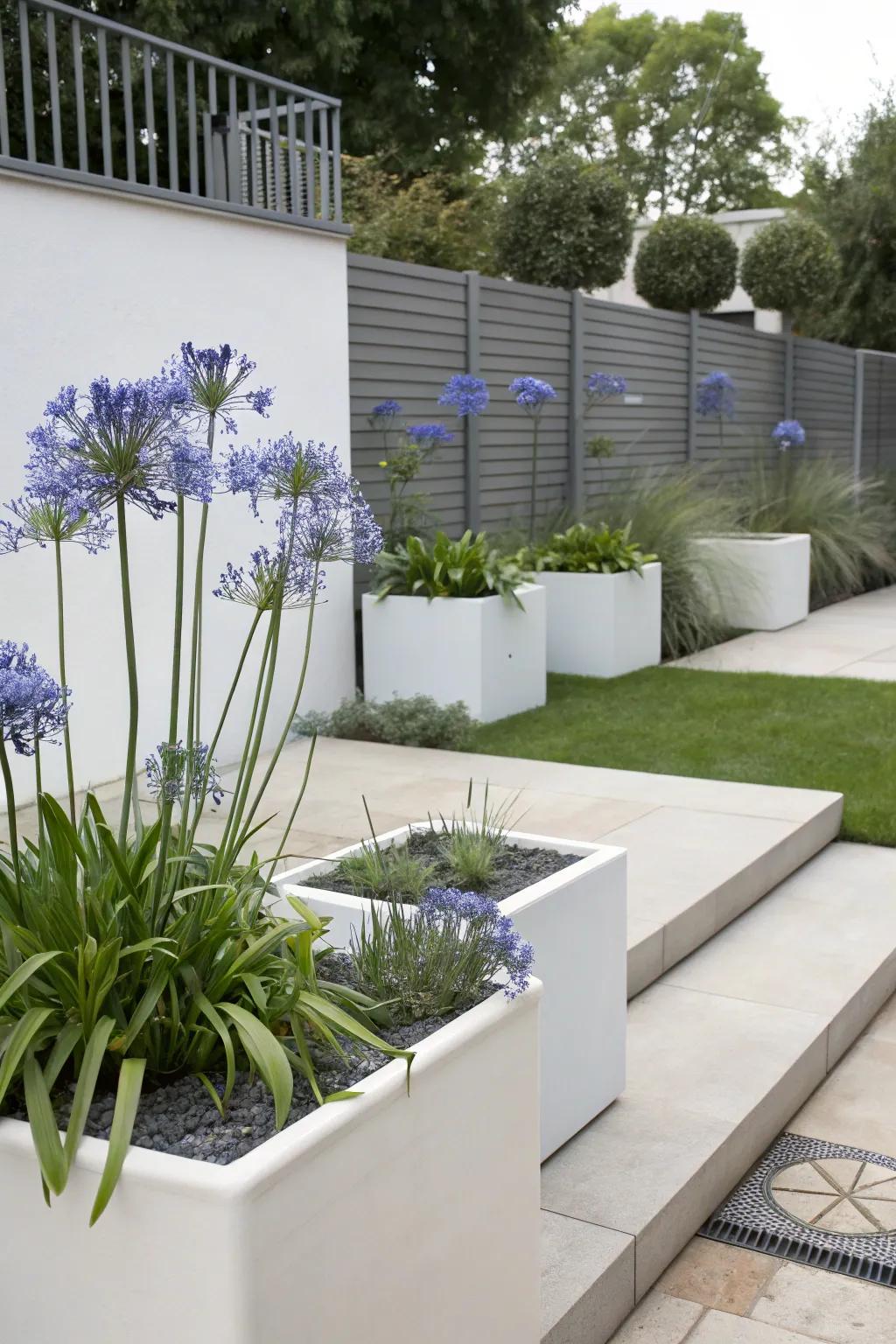
Use agapanthus in sleek, modern containers to update contemporary garden spaces. I’ve found that their bold blooms bring a fresh twist to minimalist designs.
Useful items to consider:
- Sleek White Ceramic Planters: Elevate your garden’s style with these sleek white ceramic planters, perfect for agapanthus.
- Minimalist Outdoor Garden Stones: Enhance garden aesthetics with minimalist stones for a sophisticated, modern look.
- Modern Patio Privacy Screens: Add sleek privacy to your garden with modern design screens, perfect for any outdoor space.
14. Seasonal Planting with Agapanthus
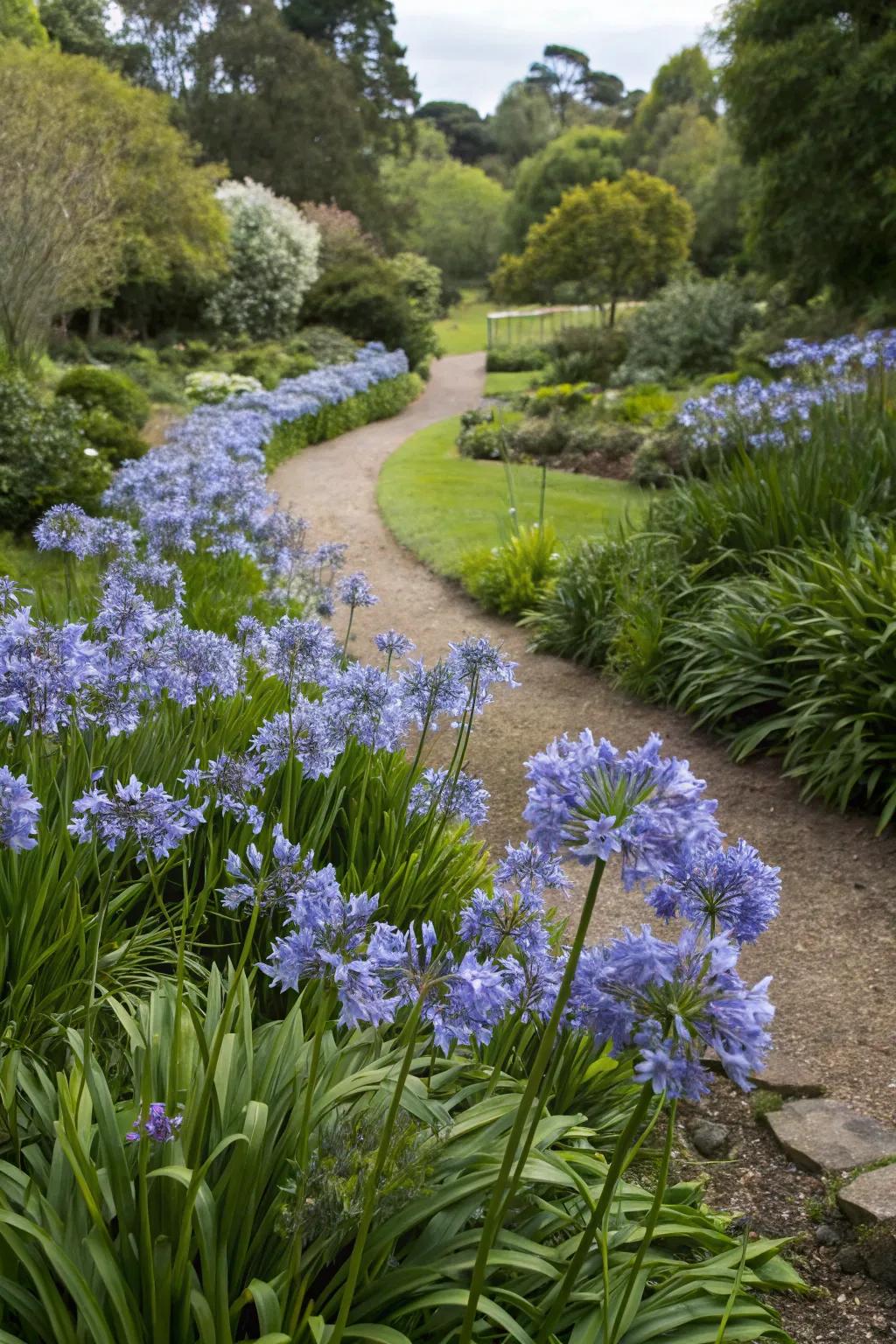
Plan your garden around agapanthus to ensure blooms throughout the season. Their long-lasting flowers in my garden provide continuous beauty from spring to fall.
Might be a good match:
- Agapanthus Bulbs: Enhance your garden’s beauty by planting vibrant agapanthus bulbs for gorgeous seasonal blooms.
- Bird Netting for Gardens: Protect your agapanthus with durable bird netting, ensuring uninterrupted growth and blooming.
- Mulch for Flower Beds: Maintain moisture and improve soil health with quality mulch, keeping your agapanthus thriving.
15. Surprising Agapanthus Combinations
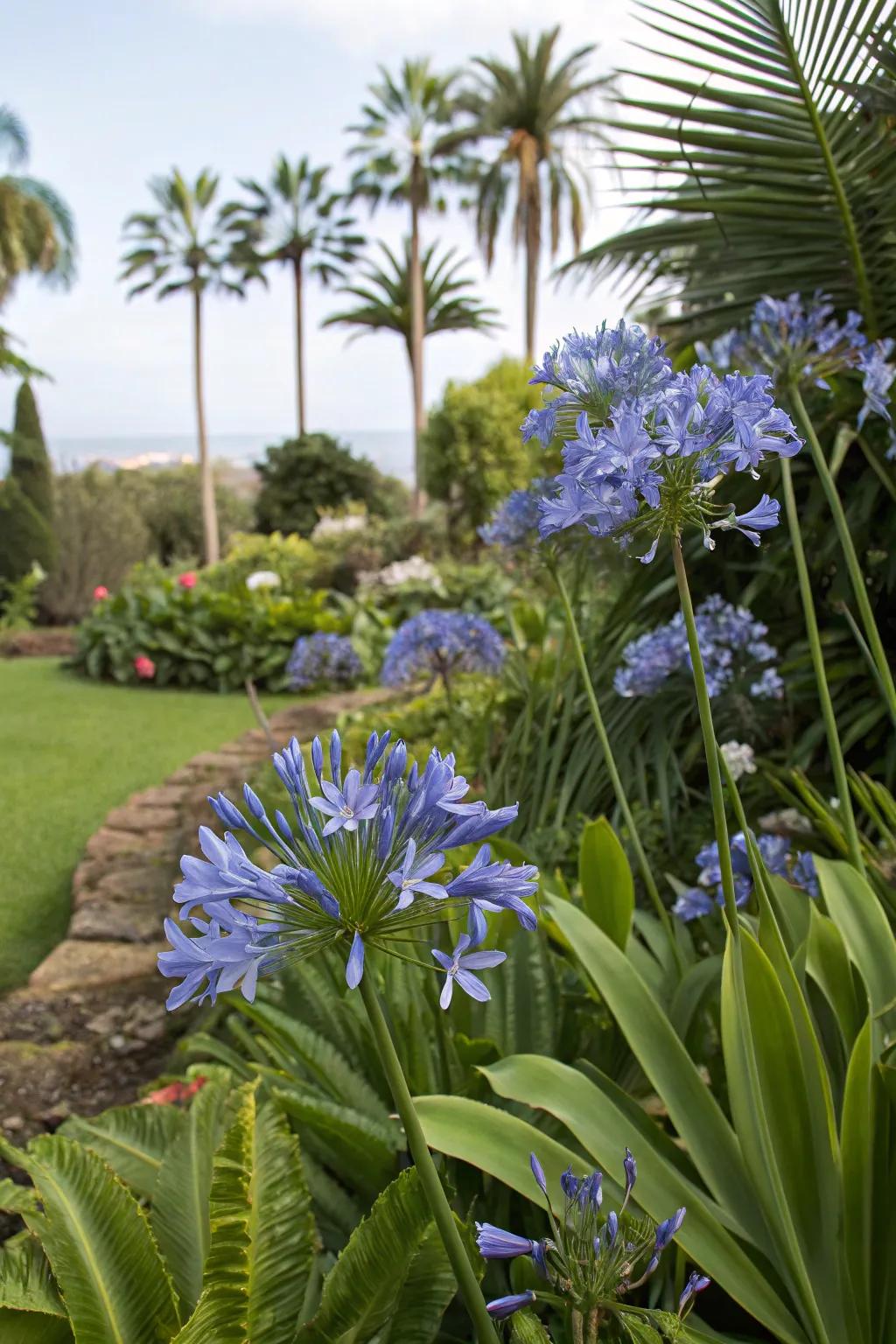
Experiment with unusual plant combinations using agapanthus for a surprising twist. I once paired them with tropical foliage, and the result was an unexpected but delightful surprise.
Give these a look:
- Tropical Fern Garden Plants: Enhance your garden with lush tropical ferns for a captivating agapanthus combination. Try it today!
- Decorative Garden Stone Edging: Add elegance to your landscape with beautiful stone edging to highlight your agapanthus arrangement.
- Palm Tree Seeds or Saplings: Transform your garden with palm trees to complement your agapanthus, creating a tropical retreat.
16. Vertical Gardens with Agapanthus
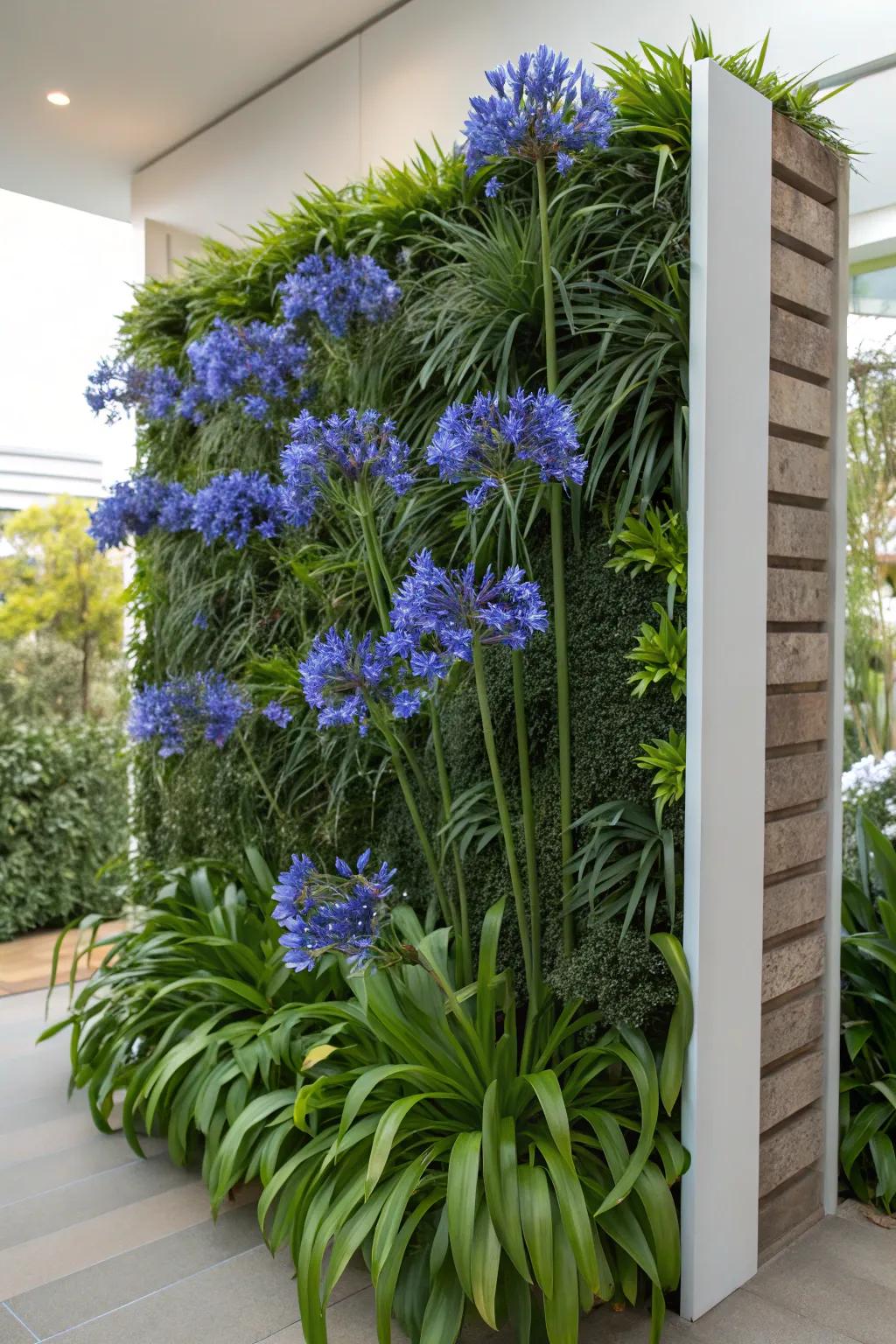
Use agapanthus in vertical garden installations for a unique design element. I find that their height and structure add an intriguing dimension to my vertical setups.
Maybe worth checking out:
- Vertical Garden Planter: Enhance your space with planters designed for vertical garden setups. Easy installation guaranteed.
- Drip Irrigation Kit for Vertical Gardens: Ensure efficient watering for your vertical garden with this drip irrigation kit. Simple and effective.
- LED Grow Lights for Indoor Vertical Garden: Boost agapanthus growth indoors with energy-efficient LED grow lights. Perfect for vertical gardens.
17. Container Gardening for Patios
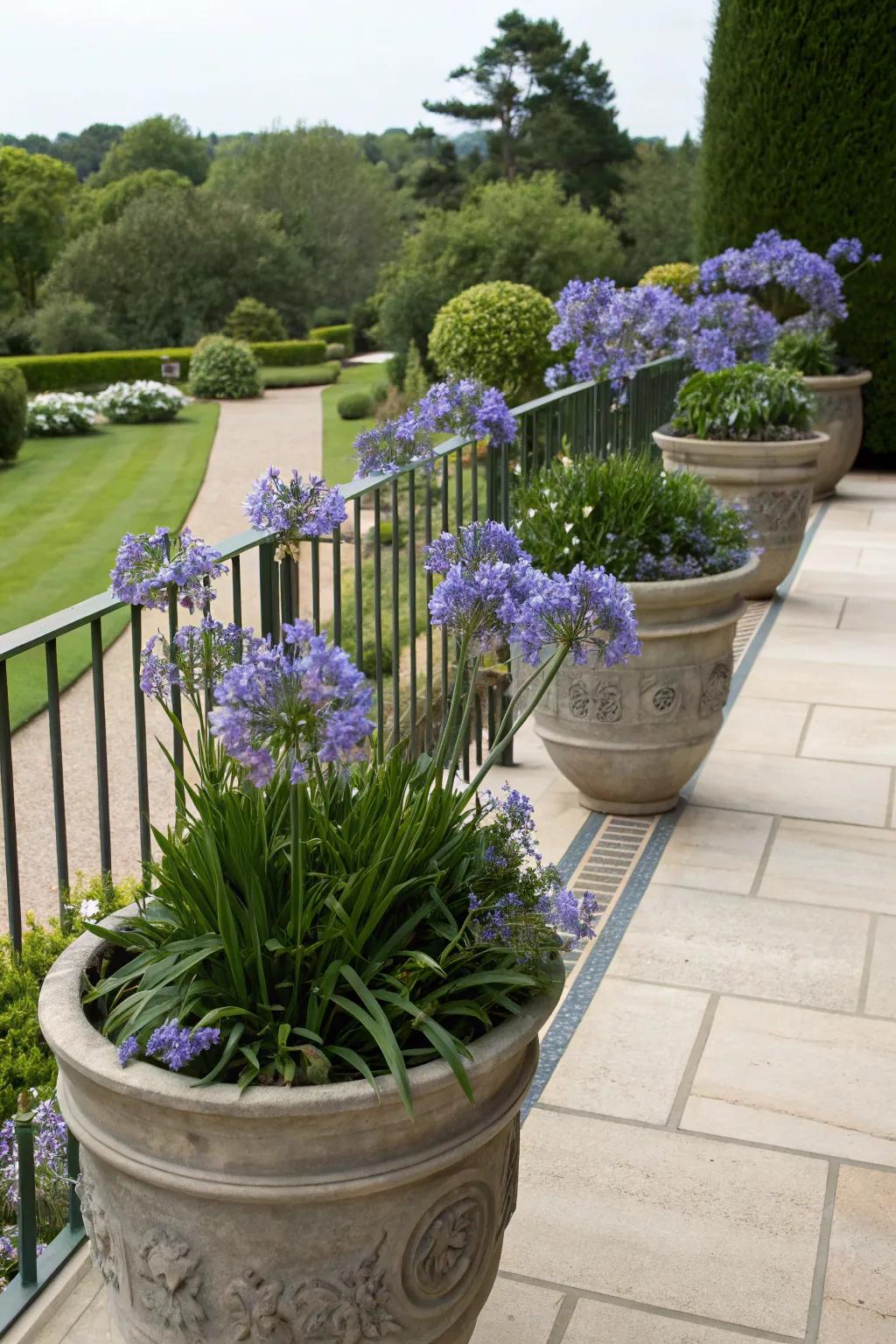
Plant agapanthus in large decorative pots to add striking vertical interest to your patio. I’ve found that these beautiful blooms thrive in containers, bringing a touch of sophistication to outdoor living spaces.
Some handy options:
- Large Decorative Outdoor Planters: Enhance your patio with elegant, spacious planters perfect for showcasing agapanthus blooms.
- Potting Soil Mix for Container Gardening: Ensure healthy growth with nutrient-rich potting soil ideal for container gardens.
- Watering Can with Long Spout: Maintain your plants easily; use a long-spout watering can for precise irrigation.
18. Agapanthus in Urban Gardens
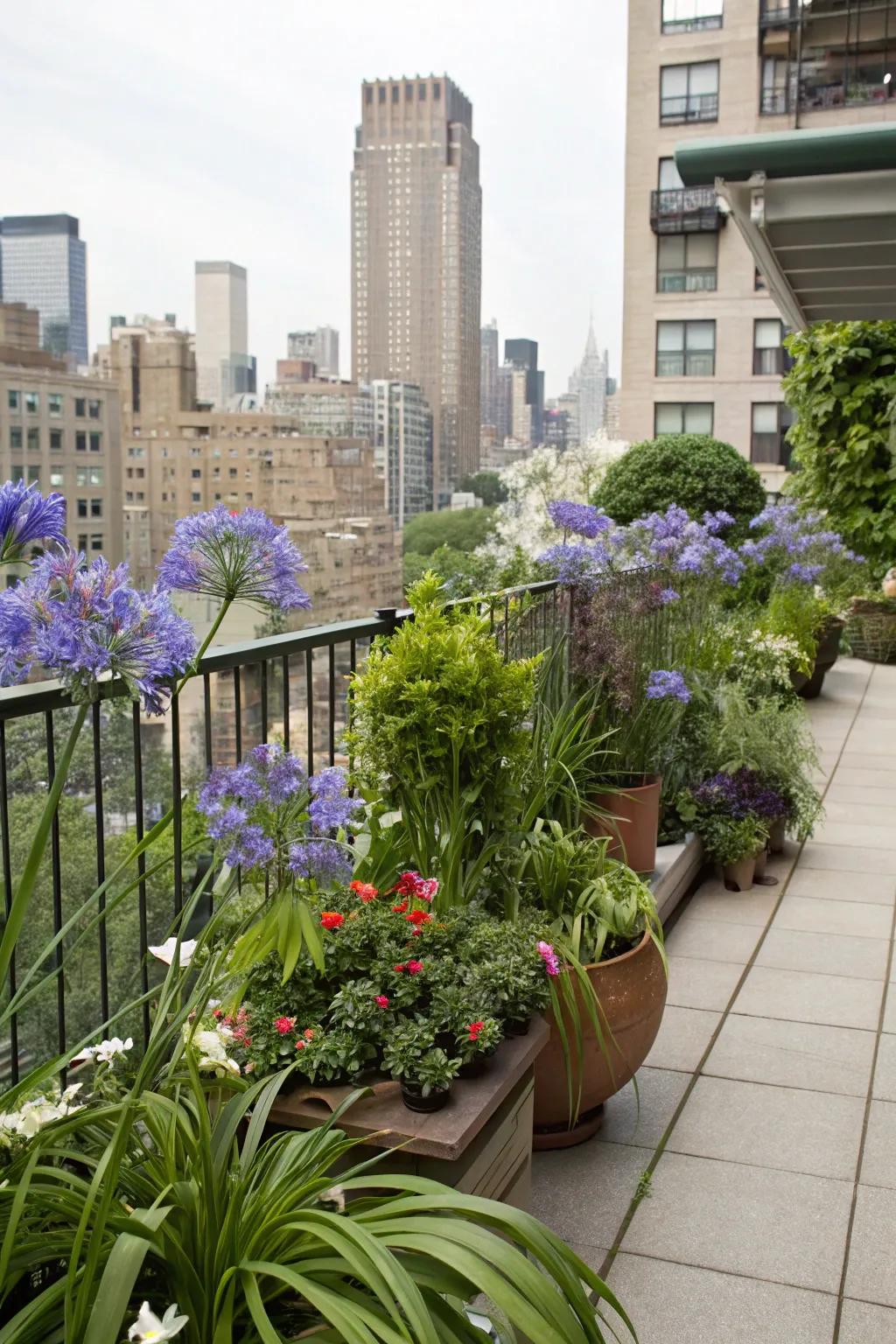
Brighten up urban garden spaces with agapanthus for a touch of nature in the city. I love how they bring life and color to my city balcony garden.
Explore these options:
- Terracotta Plant Pots: Enhance your urban garden with stylish terracotta pots, complementing your agapanthus beautifully.
- Balcony Planter Brackets: Maximize space with sturdy plant brackets for easy hanging of agapanthus on railings.
- Self-Watering Plant System: Simplify maintenance with a self-watering system to keep agapanthus thriving on your balcony.
19. Formal Gardens with Geometric Precision
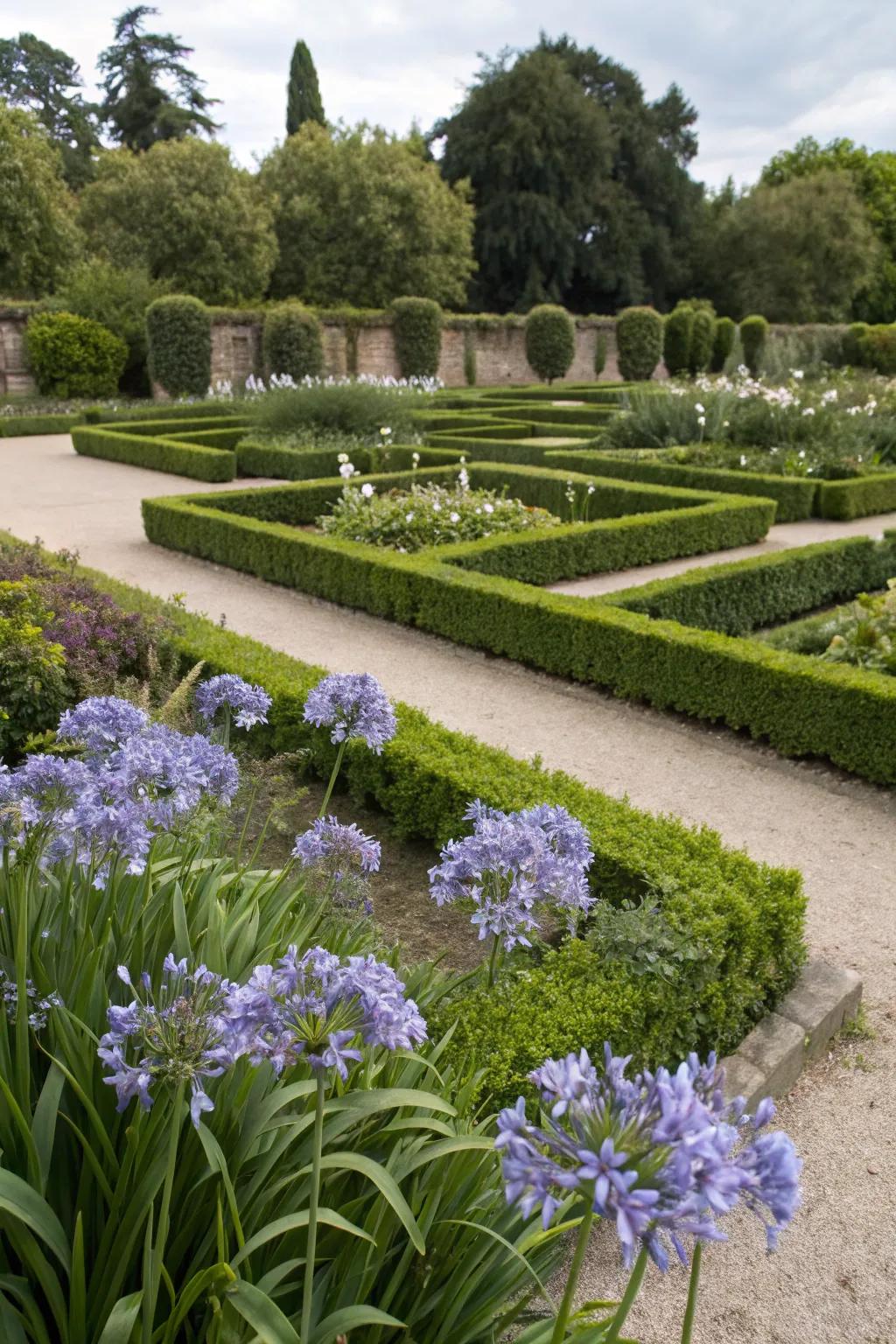
Incorporate agapanthus into formal garden designs with clean lines and geometric shapes. The structured beauty of these plants complements the neatness of trimmed hedges in my formal garden projects.
Possibly helpful picks:
- Garden Hedge Trimming Shears: Maintain your hedges’ clean lines effortlessly with these precision trimming shears. Achieve perfect shapes.
- Decorative Garden Edging: Enhance garden aesthetics with durable edging that accentuates clean geometric designs. Easy installation.
- Agapanthus Bulbs for Planting: Incorporate vibrant agapanthus with these premium bulbs. Perfect for elegant, structured garden layouts.
